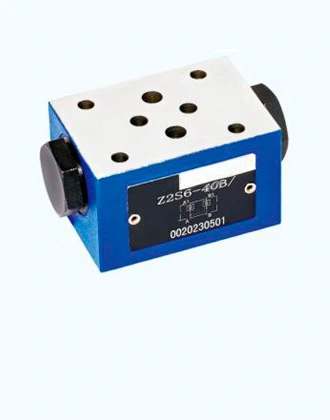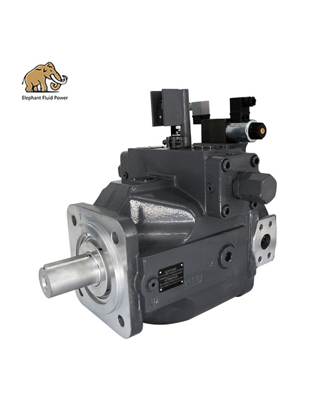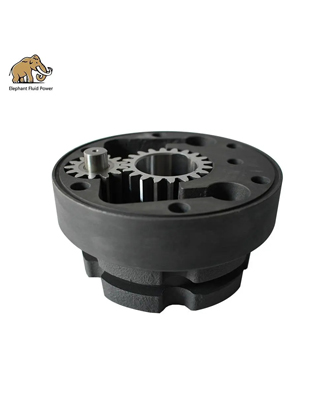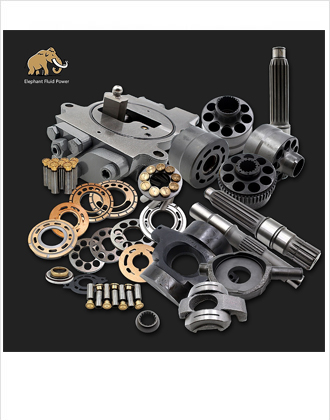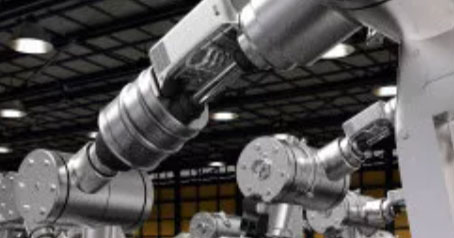1. Working principle of hydraulic pump
The working principle of the hydraulic pump is that the movement brings about a change in the volume of the pump cavity, thereby compressing the fluid so that the fluid has pressure energy. The necessary condition is that there is a change in the sealing volume of the pump cavity.
A hydraulic pump is a hydraulic component that provides pressurized liquid for hydraulic transmission, and is a type of pump. Its function is to convert the mechanical energy of power machines (such as electric motors and internal combustion engines) into liquid pressure energy. Its cam is rotated by an electric motor. When the cam pushes the plunger to move upward, the sealing volume formed by the plunger and the cylinder is reduced, and the oil is squeezed out from the sealing volume and discharged to the required place through the one-way valve. When the cam rotates to the descending part of the curve, the spring forces the plunger downward to form a certain degree of vacuum, and the oil in the tank enters the sealing volume under the action of atmospheric pressure. The cam makes the plunger rise and fall continuously, the sealing volume decreases and increases periodically, and the pump continuously absorbs and discharges oil.
There are many factors affecting the service life of the hydraulic pump, in addition to the design and manufacturing factors of the pump itself, the selection of some parts of hydraulic piston pump related to the use of the hydraulic pump (such as couplings, oil filters, etc.), and the operation during the commissioning process are also related.
2. What are the classifications of hydraulic pumps?
Types of pumps in hydraulic system: 1. According to whether the flow can be adjusted, it can be divided into: variable pump and quantitative pump. The output flow of hydraulic piston pump can be adjusted according to the needs called variable pump, the flow can not be adjusted called quantitative pump. 2. According to the pump structure commonly used in hydraulic system, it is divided into three types: gear pump, vane pump and plunger pump.
Gear pump: small in volume, simple in structure, less strict on oil cleanliness, and cheaper in price; but the pump shaft is subject to unbalanced force, serious wear, and large leakage. Vane pump: divided into double-acting vane pump and single-acting vane pump. This kind of pump has uniform flow, stable operation, low noise, higher working pressure and volumetric efficiency than gear pump, and more complicated structure than gear pump. Plunger pump: high volumetric efficiency, small leakage, can work under high pressure, mostly used in high-power hydraulic systems; but complex structure, high requirements for materials and processing accuracy, high price, and high requirements for oil cleanliness. Piston pumps are generally used when gear pumps and vane pumps cannot meet the requirements. There are some other forms of hydraulic pumps, such as screw pumps, etc., but the application is not as common as the above three.
 French
French
 Portuguese
Portuguese
 Russian
Russian
 German
German
 Spanish
Spanish
 Japanese
Japanese
 Korean
Korean
 Irish
Irish
 Greek
Greek
 Turkish
Turkish
 Italian
Italian
 Danish
Danish
 Romanian
Romanian
 Indonesian
Indonesian
 Czech
Czech
 Afrikaans
Afrikaans
 Swedish
Swedish
 Polish
Polish
 Basque
Basque
 Catalan
Catalan
 Esperanto
Esperanto
 Hindi
Hindi
 Lao
Lao
 Albanian
Albanian
 Amharic
Amharic
 Armenian
Armenian
 Azerbaijani
Azerbaijani
 Belarusian
Belarusian
 Bengali
Bengali
 Bosnian
Bosnian
 Bulgarian
Bulgarian
 Cebuano
Cebuano
 Chichewa
Chichewa
 Corsican
Corsican
 Croatian
Croatian
 Dutch
Dutch
 Estonian
Estonian
 Filipino
Filipino
 Finnish
Finnish
 Frisian
Frisian
 Galician
Galician
 Georgian
Georgian
 Gujarati
Gujarati
 Haitian
Haitian
 Hausa
Hausa
 Hawaiian
Hawaiian
 Hebrew
Hebrew
 Hmong
Hmong
 Hungarian
Hungarian
 Icelandic
Icelandic
 Igbo
Igbo
 Javanese
Javanese
 Kannada
Kannada
 Kazakh
Kazakh
 Khmer
Khmer
 Kurdish
Kurdish
 Kyrgyz
Kyrgyz
 Latin
Latin
 Latvian
Latvian
 Lithuanian
Lithuanian
 Luxembourg
Luxembourg
 Macedoniar
Macedoniar
 Malagasy
Malagasy
 Malay
Malay
 Malayalam
Malayalam
 Maltese
Maltese
 Maori
Maori
 Marathi
Marathi
 Mongolian
Mongolian
 Burmese
Burmese
 Nepali
Nepali
 Norwegian
Norwegian
 Pashto
Pashto
 Persian
Persian
 Punjabi
Punjabi
 Serbian
Serbian
 Sesotho
Sesotho
 Sinhala
Sinhala
 Slovak
Slovak
 Slovenian
Slovenian
 Somali
Somali
 Samoan
Samoan
 Scots Gaelic
Scots Gaelic
 Shona
Shona
 Sindhi
Sindhi
 Sundanese
Sundanese
 Swahili
Swahili
 Tajik
Tajik
 Tamil
Tamil
 Telugu
Telugu
 Thai
Thai
 Ukrainian
Ukrainian
 Urdu
Urdu
 Uzbek
Uzbek
 Vietnamese
Vietnamese
 Welsh
Welsh
 Xhosa
Xhosa
 Yiddish
Yiddish
 Yoruba
Yoruba
 Zulu
Zulu

